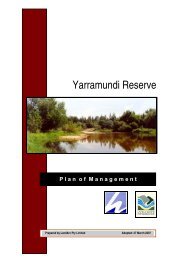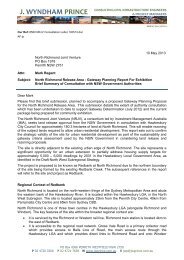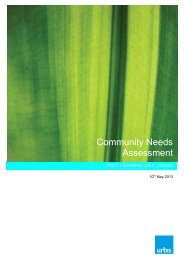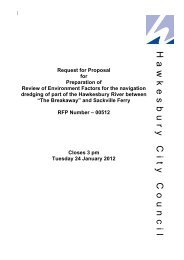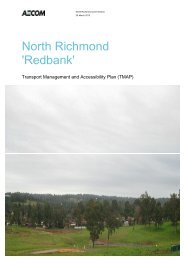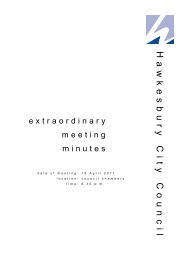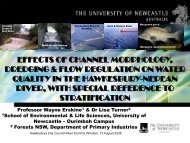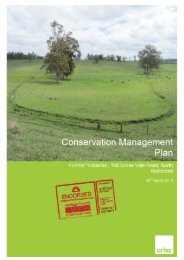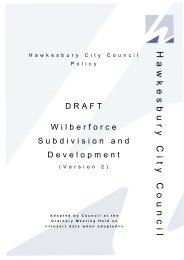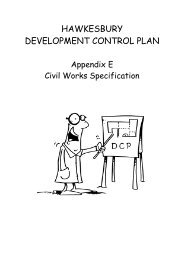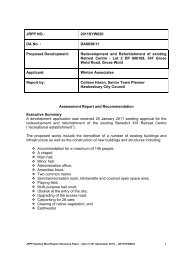Attachment 1 to Item 53 - Roadside Vegetation Management Plan
Attachment 1 to Item 53 - Roadside Vegetation Management Plan
Attachment 1 to Item 53 - Roadside Vegetation Management Plan
You also want an ePaper? Increase the reach of your titles
YUMPU automatically turns print PDFs into web optimized ePapers that Google loves.
H AW K E S B U R Y C IT Y C O U N C IL R O AD S ID E V E G E T AT IO N M AN AG E M E N T P L AN<br />
section and strict pro<strong>to</strong>cols are <strong>to</strong> be adhered <strong>to</strong> while undertaking work in this section of roadside.<br />
Markers will differentiate the beginning and end of segments, with end markers comprising a diagonal<br />
line <strong>to</strong> indicate that the significant section of roadside vegetation has ended. The information on the<br />
sign will indicate that it is in the Hawkesbury City Council (HCC) area, the presence of significant Road<br />
Side <strong>Vegetation</strong> (RSV) and the unique identification number (035) that is recorded in the data base. A<br />
visual example of the marker plate <strong>to</strong> be used as a roadside marker is provided in Figure 5.<br />
The location of each roadside marker should be recorded and s<strong>to</strong>red in a data base that records the<br />
location of significant roadside features and provides details of each site’s special feature and/or<br />
management requirements. The register of roadside markers can then be used by staff during planning<br />
of road works <strong>to</strong> advise road maintenance crews of the location of significant sites and special work<br />
practice requirements. The roadside markers will enable Council and agency work crews <strong>to</strong> respond <strong>to</strong><br />
identified sites by retrieving details from the Council’s roadside marker data base, and implement<br />
appropriate management methods and constraints <strong>to</strong> avoid unnecessary damage <strong>to</strong> the site.<br />
Additional <strong>to</strong> the roadside marker scheme areas that have been identified as wildlife crossings or wildlife<br />
areas are recommended <strong>to</strong> be marked with appropriate signage <strong>to</strong> advise road uses of the presence of<br />
wildlife in the area. The aim of this is <strong>to</strong> reduce the incidence of collisions between mo<strong>to</strong>r vehicles and<br />
wildlife.<br />
Figure 5: Example of roadside marker<br />
HCC<br />
RSV<br />
035<br />
HCC<br />
RSV<br />
035<br />
© E C O L O G I C AL AU S T R AL I A P T Y L T D<br />
63



